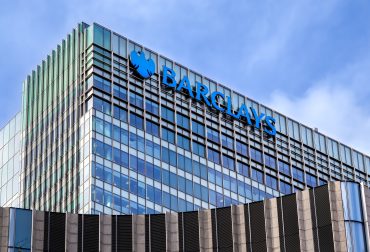
Carlyle and Citi Partner to Finance Fintech Specialty Lenders
6 minute read

Private Equity Giant and Global Bank Join Forces to Tap $5.2T Asset-Backed Finance Market
Three Key Facts
- Carlyle and Citi have formed a strategic partnership to provide asset-backed financing to fintech specialty lenders, targeting the $5.2 trillion asset-backed finance market
- A major urban infrastructure project received government approval with over $500 million in funding, expected to reduce traffic congestion by 25% and create 1,500 construction jobs
- 54% of Generation Z consumers prioritize non-traditional financial service providers, driving demand for fintech solutions that align with their digital-first lifestyle and values
Introduction
Two significant developments are reshaping both physical and financial infrastructure landscapes. Carlyle Group and Citigroup have announced a major collaboration to provide asset-backed financing to fintech specialty lenders, marking a pivotal moment in the convergence of traditional finance and digital innovation.
Simultaneously, a transformative urban infrastructure project has received approval with substantial government backing. These parallel developments highlight the growing emphasis on modernizing both digital and physical frameworks that support economic growth.
Key Developments
The Carlyle-Citi partnership establishes a comprehensive framework for asset-backed financing specifically targeting fintech specialty lenders. According to Google News, the collaboration leverages combined expertise to fund fintech company growth through scalable capital solutions backed by loan portfolios and receivables.
The partnership structure facilitates both private debt and equity investments, with potential expansion into public asset-backed bonds. Carlyle’s credit and structuring capabilities complement Citi’s extensive network and venture equity investing through their SPRINT team, which specializes in fintech investments.
Meanwhile, the approved infrastructure project commits over $500 million toward enhancing transportation networks in a major urban area. Officials project the development will generate 1,500 construction jobs and 300 permanent positions in transportation management and maintenance.
Market Impact
The asset-backed finance market represents approximately $5.2 trillion in value, presenting substantial opportunities for private credit expansion. Carlyle and Citi position themselves to capitalize on fintech-originated assets including consumer loans, mortgages, and auto loans, creating new contractual cash flow streams.
This collaboration addresses evolving funding needs as fintech lenders mature and require more sophisticated capital structures. The partnership responds to changing consumer preferences, particularly among Generation Z, where 54% prioritize non-traditional financial service providers over conventional banks.
The infrastructure project expects to reduce traffic congestion by nearly 25% within its first operational year. Local economic impact extends beyond immediate job creation, with improved transportation efficiency potentially attracting additional business investment and residential development.
Strategic Insights
The fintech financing model reflects broader industry recognition of digital transformation in financial services. Rajiv Amlani, global head of private markets coverage at Citi, emphasizes how artificial intelligence changes the fintech landscape, with specialty lenders seeking growth capital from established financial institutions.
Carlyle’s CFO John Redett describes asset-backed finance as a “massive market” and significant growth driver, noting substantial headcount investments in this sector. The approach mirrors successful wealth management expansion strategies, indicating long-term institutional commitment.
The infrastructure project demonstrates continued government investment in physical systems that support economic activity. City planners have committed to comprehensive environmental assessments and mitigation strategies, addressing community concerns about air quality and noise pollution during construction phases.
Expert Opinions and Data
Industry leaders view the Carlyle-Citi collaboration as a template for future alliances between traditional finance and emerging lenders. Akhil Bansal, head of asset-backed finance at Carlyle, notes the partnership will “support the next generation of financial technology leaders.”
Rajiv Amlani highlights how the collaboration “leverages the best of both firms” and positions them to “unlock opportunities by bringing the dynamism of innovative tech platforms to an established global leader.” This sentiment reflects broader industry recognition of synergies between traditional financial expertise and technological innovation.
Digital banking leaders emphasize changing consumer expectations. Gavin Michael, CEO of digital-only Varo Bank, explains that younger consumers “want products aligned with their values, aligned with their lifestyle, and they want to be digitally present.” This shift drives demand for real-time payouts and socially conscious financial services.
Community response to the infrastructure project remains mixed, with proponents citing reduced travel times and improved safety benefits. Local community groups express environmental concerns, prompting officials to pledge ongoing engagement and transparency throughout project implementation.
Conclusion
The Carlyle-Citi partnership establishes a significant precedent for traditional financial institutions engaging with fintech innovation. By targeting the substantial asset-backed finance market, both firms position themselves at the intersection of established credit expertise and emerging digital lending platforms.
The approved infrastructure project represents continued public investment in physical systems that support economic growth. Both developments reflect broader themes of modernization and adaptation, whether in digital financial services or urban transportation networks, demonstrating how established institutions and government entities respond to evolving market demands and community needs.








